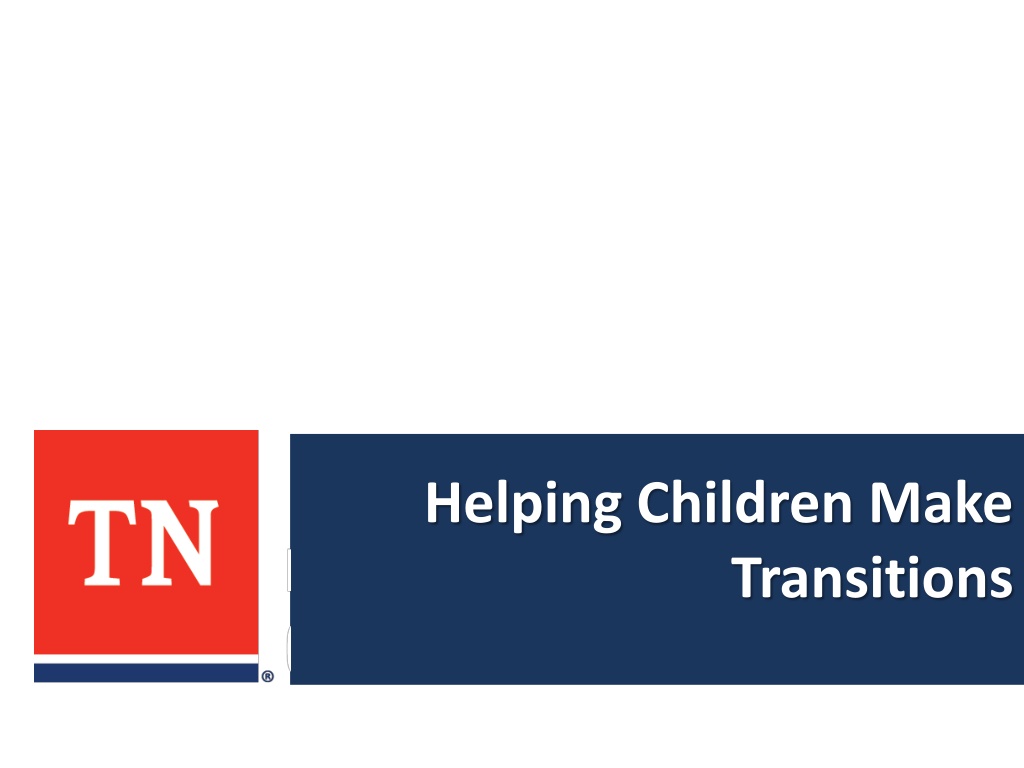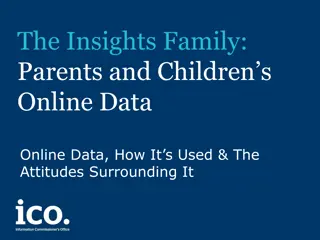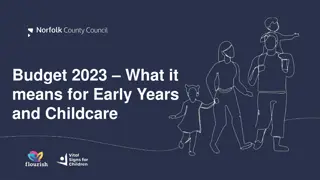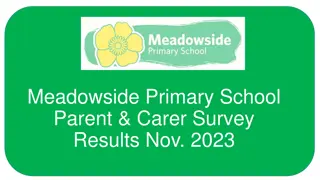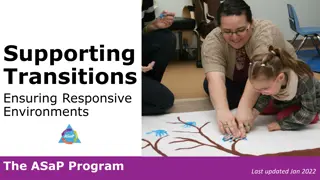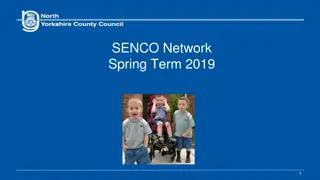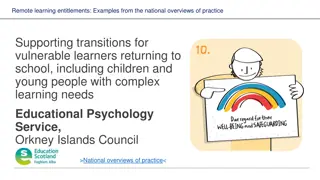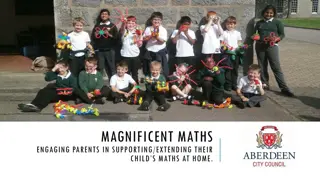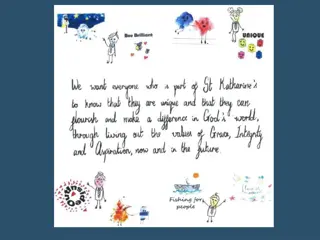Supporting Children Through Transitions: A Guide for Resource Parents
Understand the role of resource parents in aiding children through transitions, learn techniques to support both children in care and their birth families, discover the therapeutic tool of Life Books, and develop the ability to create Life Books with children in your care. Highlights include building on family strengths, assisting birth parents, and fostering positive relationships between caregiving and birth families.
Download Presentation

Please find below an Image/Link to download the presentation.
The content on the website is provided AS IS for your information and personal use only. It may not be sold, licensed, or shared on other websites without obtaining consent from the author. Download presentation by click this link. If you encounter any issues during the download, it is possible that the publisher has removed the file from their server.
E N D
Presentation Transcript
Helping Children Make Transitions
Agenda Welcome/Orientation Icebreaker Helping Children Make Transitions Break Introduction to Life Books Life Book Activity Closure 2
Objectives Understand the role of resource parents in helping a child to make transitions. Learn about techniques that other resource families have used to support children in their care and to support the birth families of those children. Recognize Life Book as a therapeutic tool. Identify information that should be included in a Life Book. Demonstrate the ability to develop a Life Book with children placed in their home. 3
Icebreaker Activity RICHARD S STORY 4
Highlights It is important to remember that every child who enters your family leaves another family behind. 5
Highlights To support a child making transitions, it is important to identify and build on the family s strengths, so the child will know that the relationship with his/her birth family has not been lost. 6
Bridges Supporting the Child s Family Helping the Child s Family Teaching the Child s Family Participating with the Child s Family 7
Ways to Build on the Familys Strengths: Talk openly with the child about his/her birth family Ask the parents for input about the child s likes and dislikes Assist birth parents with transportation to meetings or events 8
Benefits The child benefits when caregiving families work with the birth parents The child does not have to choose one set of parents over another Reduces the stress the child feels when both sets of parents get along Minimizes the manipulation some children exhibit when they try to play parents against each other 9
Three Stages of Transition Ending Neutral Zone New Beginning 10
Participant GuideArticle HELPING CHILDREN MAKE TRANSITIONS 11
Video Segment Helping Children Make Transitions
Tips for Transition 1. Speak positively about birth parent 2. Request photos of birth family 3. Create an ecomap 4. Allow child to take familiar items 5. Gather information about previous rules, routines, etc. 6. Transition over a period of time 7. Provide a suitcase of duffel bag 8. Give child their own space 9. Give child time and space to become familiar with new environment 10.Allow child to say goodbye before move 13
Gold Coin Activity Write an interesting or historical fact about your family heritage 15
My Loved Ones Activity Place Name on Form Insert Loved Ones Names 16
What is a Life Book ? Chronological & evolving record Contains pictures & facts A therapeutic tool Help children work through losses and difficulties Celebrate strengths Develops a positive self-esteem A path to memories An avenue to understanding the past 17
Why Do Foster Children Need Life Books? Provides the reason for child being in foster care Helps child to heal Helps child understand why they can t return home Gives permission to love and cherish their bio, foster, & adoptive family 18
Who Creates the Life Book? Child (primarily) Teachers Parents Mentors Foster parents Aunts Adoptive parents Uncles Caseworkers Grandparents Therapists Siblings 19
Food For Thought Life books are for all children placed in foster care, regardless of their permanency goal 20
LIFE BOOKS REMEMBER THAT LIFE BOOKS ARE ONGOING AND FOLLOW THE CHILD WHEREVER HE/SHE GOES 21
Options For Life Books Printable life book/ pages/scrap book pages LIFE BOOKS Purchase a life book Instant journals Family worker may supply 24
Handout 25
Brainstorming Activity How can you assist foster children with their Life Books? 26
Ways to Assist Set aside a specific time Encourage older child to work with younger child Remind them of activity involvement Start current & stay current 27
Brainstorming Activity Ideas to help when looking for information to put in a LIFE BOOK 28
Ideas to Find Information Take pictures of schools Ask school teacher for pictures Take pictures of churches Write down likes/dislikes Write down funny things that happen 29
TIPS HANDOUT Helping Reluctant Teens 30
Respect Childs Privacy Don t share information without child s permission Don t push the child into showing their life book & don t ask why Make sure that the child understands that they do not have to share their life book 31
GROUP ACTIVITY: Develop a Life Book Divide into groups Select Lifebook pages to complete Use Richard s information to complete the pages Cut out and glue pictures from the provided magazines onto the life book pages After 15 minutes, report on your completed work 32
Remember life books. Are a therapeutic tool that help children express feelings Develop insight Promote self esteem Preserve memories Follows the child Connect children to their past 33
Review Understand the issues faced by children in transition. Understand how to help children in transition establish new relationships without giving up former attachment. 34
